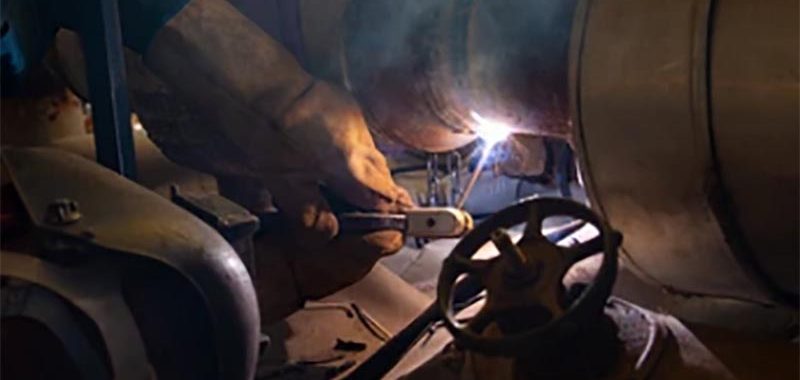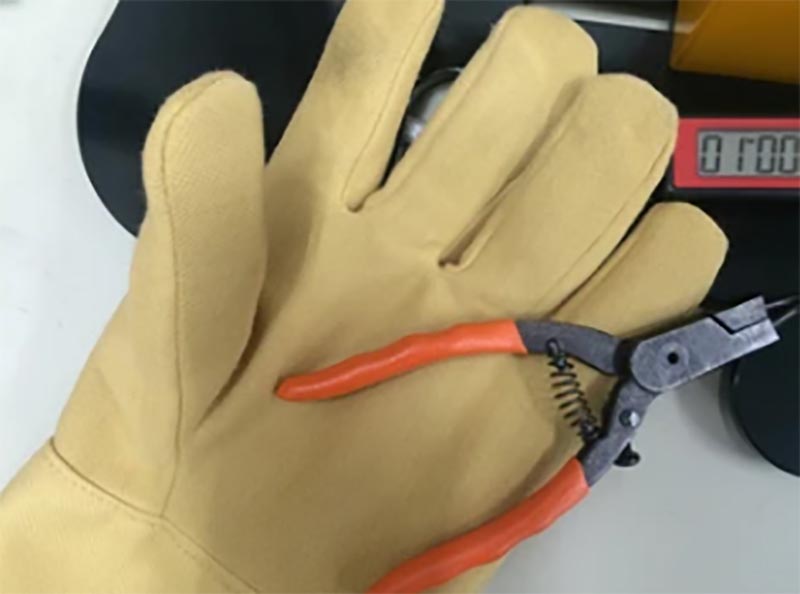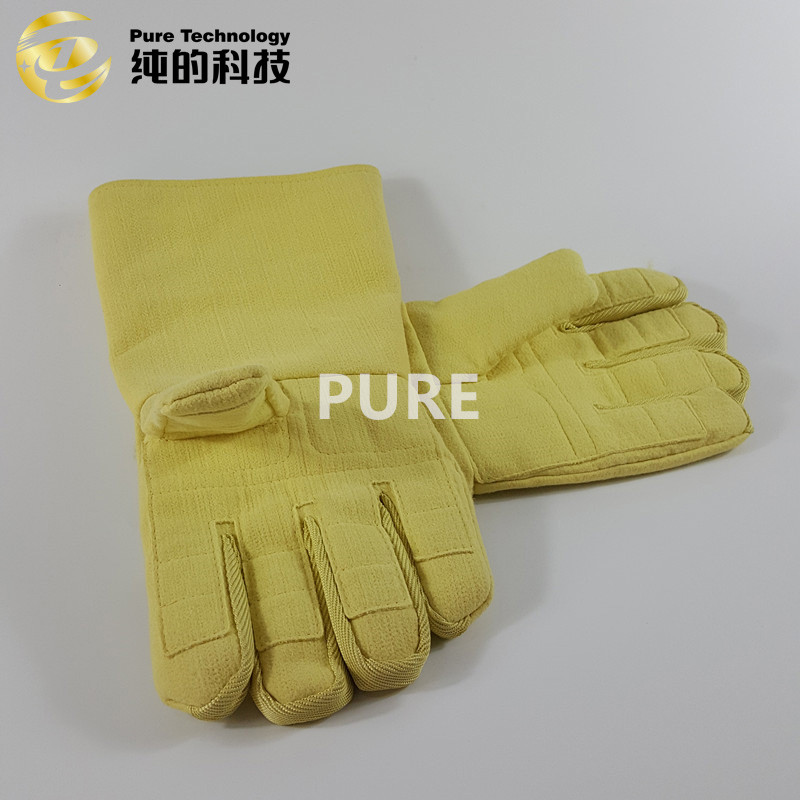The aluminum extrusion industry is a process that uses high temperature and high pressure to extrude aluminum ingots or aluminum alloys through molds.
It is widely used in construction, transportation, electronics, and other fields.
The principle of aluminum extrusion is to use the pressure of the extruder to deform and flow the aluminum ingot or aluminum alloy at high temperature, and then extrude it through the orifice of the die into an aluminum profile of the required cross-sectional shape and size.
The advantage of aluminum extrusion is that it can produce aluminum profiles with various complex cross-sectional shapes and sizes.
It has high strength, lightweight, corrosion resistance, electrical conductivity, thermal conductivity, and other properties, and is suitable for various industrial and civil fields.

The working environment in the aluminum extrusion industry is very harsh. Workers need to frequently come into contact with high-temperature aluminum liquid, aluminum rods, aluminum profiles, etc., which can easily cause scalds, burns, scratches, and other injuries to their hands.
The temperature of aluminum extrusion is generally between 300°C and 500°C, sometimes even as high as 800°C, which places high demands on workers’ hand protection.
During the aluminum extrusion process, a large number of sparks, smoke, oil, etc. will be generated. These substances will cause irritation, pollution, wear, and other effects on workers’ hands.
Aluminum extrusion operations involve a variety of sharp tools, machinery, molds, etc.
These items can cause scratches, cuts, pinches, and other dangers to workers’ hands.
Kevlar Hand Gloves are a kind of protective gloves made of Kevlar fiber.
They have excellent properties such as high strength, high modulus, high heat resistance, high wear resistance, and high cutting resistance.
They are very suitable for use in the aluminum extrusion industry and can effectively protect Worker’s hand safety and health.
Kevlar fiber is a synthetic aromatic polyamide fiber. Its strength is five times that of steel, its modulus is twice that of glass fiber, and it can withstand heat temperatures up to 500°C and will not melt or burn.

Kevlar Hand Gloves are made of Kevlar fiber and have good heat insulation and fire resistance, which can prevent hands from being scalded or burned by high-temperature objects.
Kevlar Hand Gloves also have good abrasion and cut resistance, which can prevent hands from being scratched or cut by sharp objects.
Kevlar Hand Gloves also have good flexibility and comfort, ensuring workers’ hand flexibility and operability.
It mainly includes the following steps: dissolving, extruding, stretching, spinning, weaving, cutting, sewing, inspection, and packaging.
These steps are the transformation process of Kevlar fiber from raw materials to finished products. Each step has its specific equipment, process, parameters, and quality control to ensure the performance and quality of Kevlar Hand Gloves.
Mix the synthesized polyterephthaloyl chloride (PPTA) with frozen concentrated sulfuric acid, with a solid content of about 19-14%, and heat it to the spinning temperature of 85°C to form a liquid crystal solution.
PPTA is the raw material of Kevlar fiber. It is a white powdery substance.
Its molecular structure contains benzene rings and amide bonds and has high orientation and polarity.
Frozen concentrated sulfuric acid is the solvent for Kevlar fiber.
It is a colorless liquid that contains sulfur and oxygen in its molecular structure and has high solubility and conductivity.
The mixing ratio of PPTA and frozen concentrated sulfuric acid is determined according to the requirements of spinning.
Generally, the higher the solid content, the faster the spinning speed and the higher the strength of the fiber.
After filtering the mixed spinning solution, use a gear pump to extrude it from the spinneret to form filaments.
The filter screen removes impurities and bubbles in the spinning liquid.
Generally, a multi-layer stainless steel mesh or ceramic mesh is used.
The pore size and number are determined according to the spinning requirements.
Generally, the smaller the pore size, the greater the number, and the fiber quality. The better the quality.
Gear pumps are used to transport spinning liquid. Generally, high-precision gear pumps are used.
The flow rate and pressure are determined according to the requirements of spinning.

Generally, the greater the flow rate, the higher the pressure, and the smaller the diameter of the fiber.
The spinneret is used to form filaments.
It is generally a circular or oval hole made of metal or ceramic.
Its diameter and number are determined according to the requirements of spinning.
Generally, the smaller the diameter, the greater the number. The finer the fiber, the higher the density.
The filament is stretched on a high-speed stretching machine to highly orient its molecular chains and improve its strength and modulus.
The stretching machine is used to stretch filaments. Generally, a high-speed roller or air-jet stretching machine is used.
The speed and proportion are determined according to the requirements of spinning.
Generally, the faster the speed, the greater the proportion. The higher the fiber orientation.
The stretched filaments are rolled into yarn, and different post-processing is performed according to different uses and requirements, such as dyeing, coating, compounding, etc.
Spinning is the process of winding filaments onto a spindle or bobbin to form yarn.
Generally, a high-speed spindle or bobbin machine is used.
The speed and tension are determined according to the spinning requirements.
Generally, the faster the speed, the greater the tension. , the higher the fineness of the yarn.
Weaving yarn into fabric according to a certain texture and density, and performing different post-processing according to different uses and requirements, such as waterproof, oil-proof, anti-static, etc.
Weaving is the process of staggering yarns to form cloth.
High-speed looms are generally used.
The speed and density are determined according to the weaving requirements.
Generally, the faster the speed, the greater the density, and the higher the thickness and strength of the cloth.
Cut the fabric according to the model and size of the glove to form various parts of the glove, such as the palm, back of the hand, fingers, etc.
Cutting is the process of cutting the fabric according to the shape and size of the glove.
Generally, a high-speed cutting machine is used.
The speed and accuracy are determined according to the cutting requirements.
Generally, the faster the speed, the higher the accuracy, and the better the fit and comfort of the glove. The higher.

Each part of the glove is sewn with a sewing machine to form a complete glove.
Different post-processing is performed according to different uses and requirements, such as reinforcement, decoration, marking, etc.
Sewing is the process of sewing various parts of the glove together with threads.
Generally, a high-speed sewing machine is used.
The speed and accuracy are determined according to the sewing requirements.
Generally, the faster the speed, the higher the accuracy, and the firmer and more comfortable the glove will be. The higher the degree.
Conduct quality inspection on finished gloves to check whether their appearance, size, performance, function, etc. meet the standards and requirements, and reject or repair unqualified gloves.
Inspection is a process of evaluating and controlling the quality of gloves.
High-precision instruments and equipment are generally used, such as rulers, balances, tensile machines, calorimeters, knives, etc.
The methods and standards are determined according to the inspection requirements and generally comply with Relevant national or industry regulations.
Clean, disinfect, dry, fold, classify, label, package, etc. qualified gloves to form the final product, ready for shipment and sale.
Packaging is the process of protecting and beautifying gloves.
High-quality materials and equipment are generally used, such as cartons, plastic bags, tapes, balers, etc.
The method and style should be determined according to the packaging requirements, which generally meet the needs of the customer or user. preferences and needs.

The main content and characteristics of the production process of Kevlar Hand Gloves used in the aluminum extrusion industry are emphasized.
Its significance for improving the performance and quality of gloves is emphasized, and its development prospects in the field of protection are looked forward to.
Kevlar Hand Gloves used in the aluminum extrusion industry are very practical protective equipment.
They can effectively protect workers’ hands from harm in high-temperature environments but also require a complex production process to ensure their performance and quality.
I hope they will be helpful to you. If you have any other questions, please feel free to communicate with me at any time.
If you have any questions, you can also watch our Facebook website:www.facebook.com/nomexfelt
As we know, Heat Transfer Printing Felt is suitable for fabrics, decorative fabrics, curtains, le...
Read Safety Rules for Laundry Management to be a qualified manager. PARTⅠ Laundry room Safety Gen...
The aluminum extrusion machine is the leading equipment for the production of aluminum profiles. ...
Heat transfer printing is a contemporary printing process in the clothing market. It prints the p...
In the textile industry, felt is only a small part but important. About how to choose felt that i...
Foshan Pure Technology Company., Ltd. helps conveyor belt manufacturers source equipment to metal...
What is Nomex? Meta-amide, or meta-phenylene isophthalamide, is made from meta-phenylenediamine a...
Kevlar fiber Introduction In the development of materials science, Kevlar fiber has particularly ...